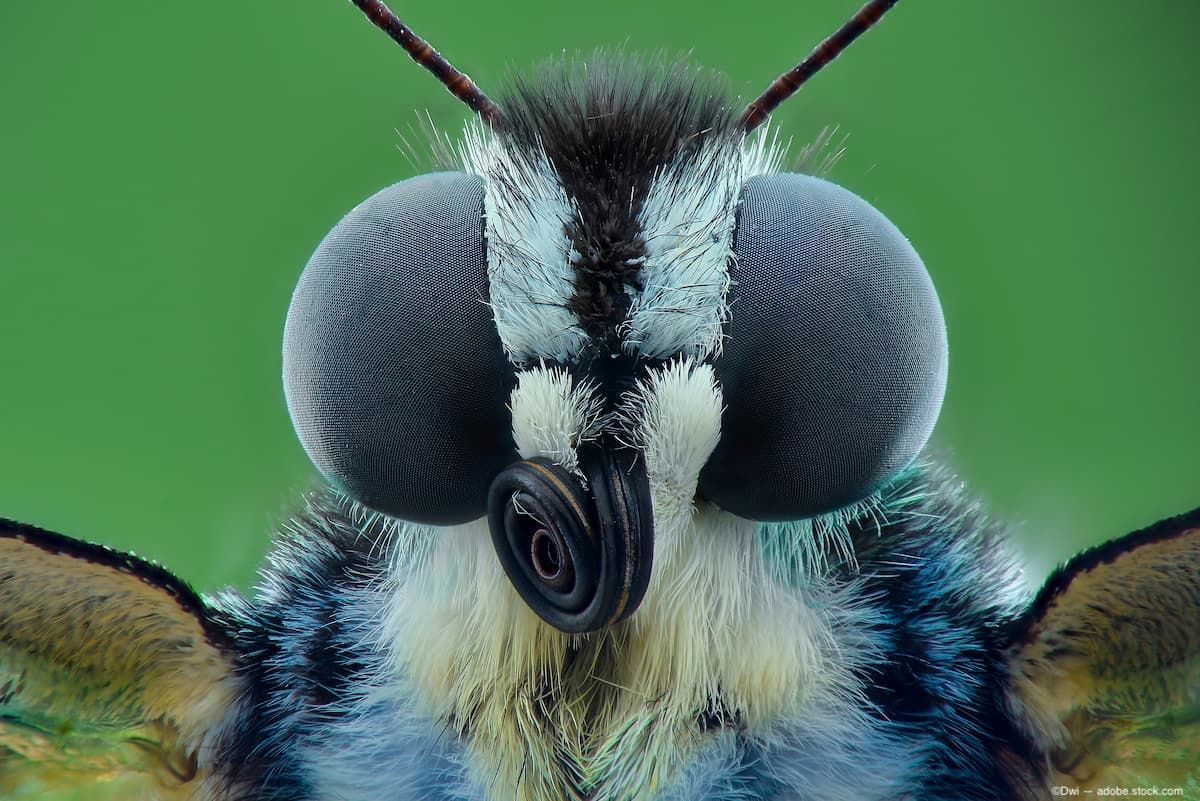UC Irvine study findings unveils causes of retinal disease through similarities in human and insect vision formation
The study focuses on similarities and differences in 11-cis-retinal and mutations in carotenoid cleavage enzymes.
Image Credit: AdobeStock/Dwi

Findings by researchers at the University of California, Irvine have gotten another step closer to understanding retinal disease causation by comparing vision formation in insects and humans. Led by first author Yasmeen J. Solano, BS, PhD candidate, the study evaluated similarities and differences in 11-cis-retinal, the “visual chromophore,” light-absorbing molecule of the retina, according to a news release. By then tracking the metabolization of carotenoid cleavage enzymes, the investigators found that mutations of the RPE65 enzyme cause retinal diseases, particularly relating to Leber congenital amaurosis.1
“Our study challenges traditional assumptions about the similarities and differences of human and insect vision,” said corresponding author Philip Kiser, UCI associate professor of physiology and biophysics, as well as ophthalmology. “While these enzymes share a common evolutionary origin and three-dimensional architecture, we found that the process by which they produce 11-cis-retinal is distinct.”
The production of 11-cis-retinal starts with consuming foods, like carrots or pumpkins, that contain compounds used for vitamin A generation, such as beta-carotene. Those nutrients are then metabolized by carotenoid cleavage enzymes, such as NinaB and RPE65. The study then built on previous knowledge that humans requires two carotenoid cleavage enzymes to produce 11-cis-retinal, while insects can produce 11-cis-retinal with just NinaB.1
While a variety of insects were used to initially identify and analyze the formation of NinaB, findings from the cabbage looper and tobacco cutworm, or species of moths, provided high soluble expression for further analysis. Detergent (Triton X-100) was then added to the cell lysate to improve the yield of soluble NinaB protein. Those proteins were then chromatographically purified, which results in nearly homogeneous preparations.2
“We found that structurally, these enzymes are very much alike, but the locations in which they perform their activity are different,” said Solano, a graduate student in Kiser’s laboratory at the UCI Center for Translational Vision Research. “Understanding key features within the NinaB structure has led to an enhanced understanding of the catalytic machinery necessary to support the function of the retinal visual pigments. Through our study of NinaB, we were able to learn about the structure of a key portion of RPE65 that had not previously been resolved. This discovery is vital in understanding and addressing loss-of-function mutations in RPE65.”
The investigators wrote that the study provides information on the “unusual type of dual catalytic enzyme that plays a crucial role in insect vision.” Both the loci of isomerization activity in NinaB and RPE65 and a lack of trans-cis isomerase activity in vertebrate beta-carotene oxygenase enzymes suggests that the last common ancestor of theses enzymes was not an 11-cis-RAL-generating enzyme.2
“We anticipate that this information will prove useful in ongoing efforts to understand the origins of the catalytic machinery necessary to support function of visual pigments in dim-light environments,” the authors wrote.
References:
UC Irvine study shows similarities and differences in human and insect vision formation. UCI News. News release. Published February 22, 2024. Accessed February 26, 2024. https://news.uci.edu/2024/02/22/uc-irvine-study-shows-similarities-and-differences-in-human-and-insect-vision-formation/
Solano YJ, Evertt MP, Dang KS, et al. Carotenoid cleavage enzymes evolved convergently to generate the visual chromophore. Nat Chem Bio (2024). doi.org/10.1038/s41589-024-01554-z
Newsletter
Want more insights like this? Subscribe to Optometry Times and get clinical pearls and practice tips delivered straight to your inbox.